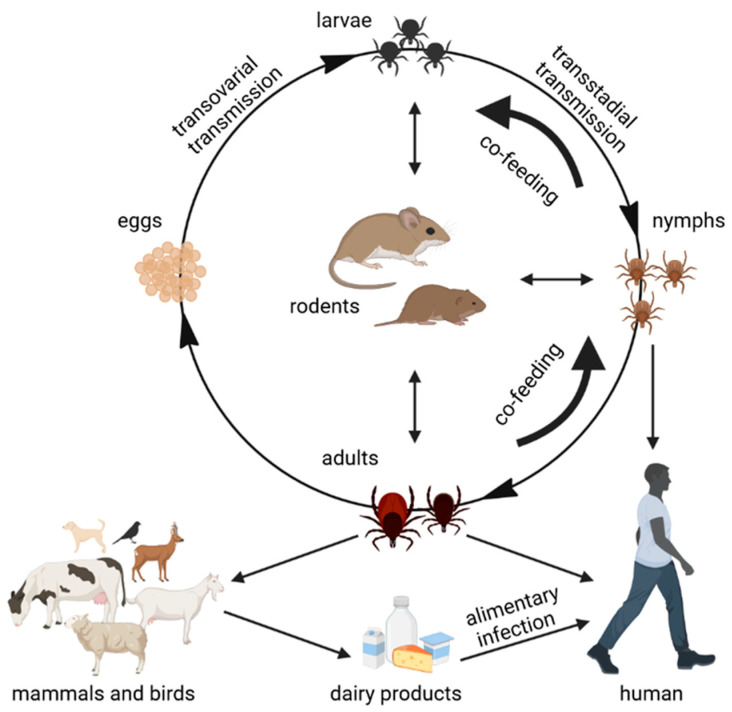Figure 1.
Routes of TBEV transmission within the life cycle of ixodid ticks. The Ixodes ricinus, I. scapularis and Dermacentor reticulatus ticks are able to maintain TBEV in nature. The life cycle of ticks consists of four developmental stages (larva, nymph, adult, and egg). Each parasitic stage (except egg) needs to take a blood meal on a suitable host to develop into the next stage. The main animal reservoirs for TBEV are rodents. Larger mammals and birds may act as hosts for adult ticks. TBEV infects ticks while they are feeding on an infected reservoir. The main route of TBEV maintenance in nature is non-viraemic transmission from nymphs to naive larvae while co-feeding on the same rodent host. TBEV can be transmitted to humans via a tick bite (mostly nymphs) and via alimentary infection through the consumption of raw milk products from TBEV-infected ruminants (goats, sheep, and cattle) (Figure was created by BioRender).

